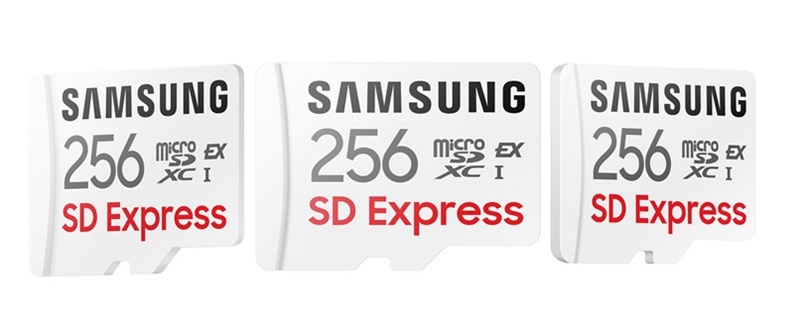

Samsung has unveiled its latest microSD card using the SD Express interface, a first in the industry. This innovative product stemmed from a successful collaboration with a customer, resulting in a custom solution.
Samsung’s SD Express microSD card
With its efficient design and specialized firmware for top performance and heat management, Samsung’s SD Express microSD card matches SSD speeds but in a compact size.
Traditional microSD cards under the UHS-1 interface were capped at 104MB/s read speed, but SD Express pushes this to 985MB/s, a leap that wasn’t feasible until now for microSD cards.


The sequential read speed of Samsung’s SD Express microSD card reaches up to 800MB/s, making it 1.4 times faster than SATA SSDs (up to 560 MB/s) and over four times faster than traditional UHS-1 memory cards (up to 200 MB/s).
To maintain stability and reliability in a small size, Dynamic Thermal Guard (DTG) technology keeps the SD Express microSD card at an optimal temperature, even during prolonged use.
Cutting-Edge 1TB UHS-1 microSD Card with 1Tb V-NAND
Samsung’s latest 1TB microSD card packs eight layers of the company’s 8th generation 1-terabit (Tb) V-NAND into a microSD format, achieving a high-capacity solution previously only seen in SSDs.
This 1TB microSD card undergoes rigorous testing to ensure reliability in demanding conditions. It features water resistance, extreme temperature tolerance, drop-proof design, wear-out protection, and safeguards against X-ray and magnetic exposure.
Availability
The Samsung 256GB SD Express microSD card will hit the market later this year, while the 1TB UHS-1 microSD card is slated for launch in the third quarter of this year.
Commenting on the launch, Hangu Sohn, Vice President of the Memory Brand Product Biz Team at Samsung Electronics, said:
With our two new microSD cards, Samsung offers effective solutions to meet the expanding needs of mobile computing and on-device AI.
Despite their compact size, these memory cards deliver robust SSD-like performance and ample capacity, empowering users to maximize their usage across demanding present and future applications.
